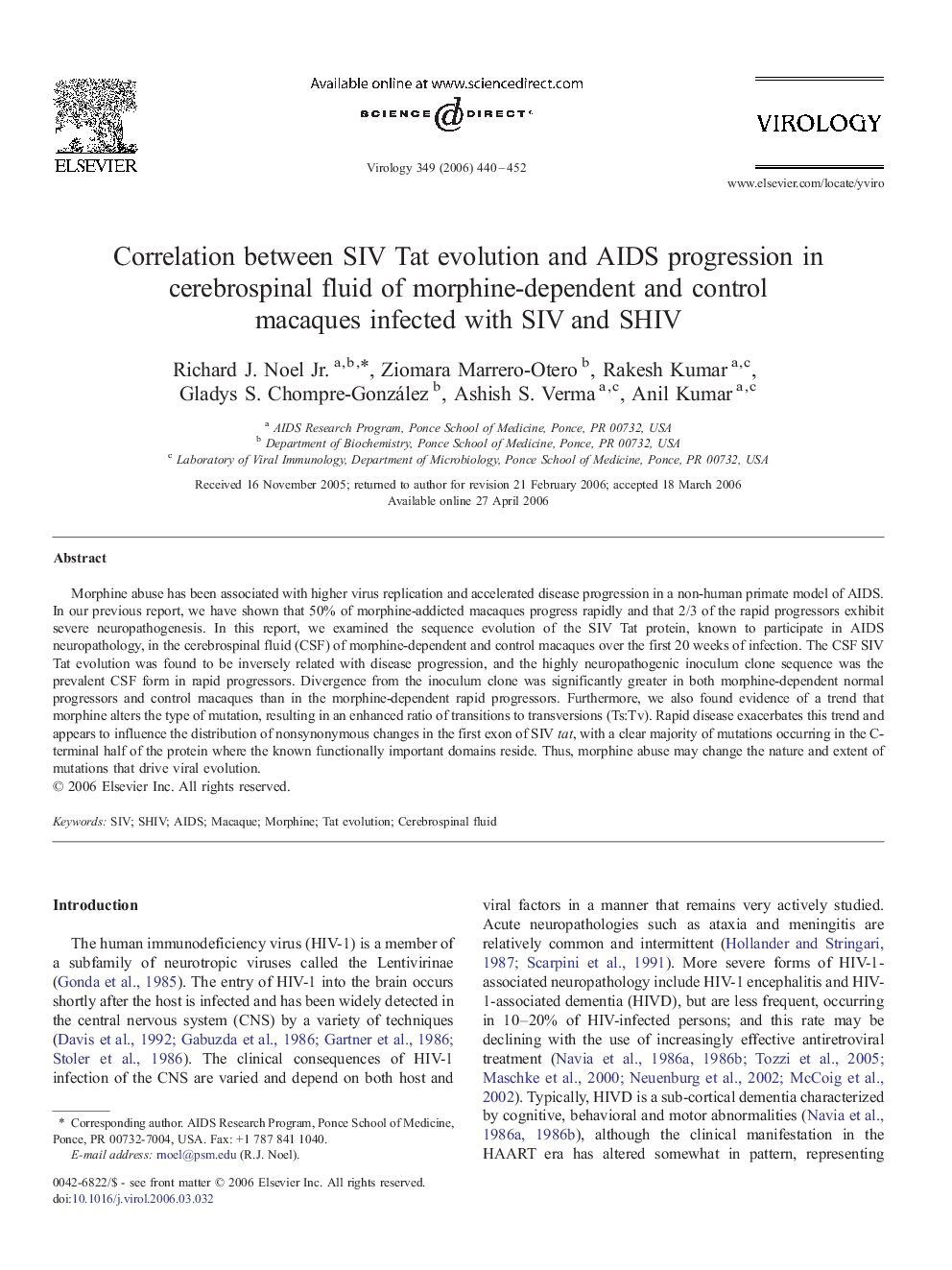| Article ID | Journal | Published Year | Pages | File Type |
|---|---|---|---|---|
| 3427346 | Virology | 2006 | 13 Pages |
Morphine abuse has been associated with higher virus replication and accelerated disease progression in a non-human primate model of AIDS. In our previous report, we have shown that 50% of morphine-addicted macaques progress rapidly and that 2/3 of the rapid progressors exhibit severe neuropathogenesis. In this report, we examined the sequence evolution of the SIV Tat protein, known to participate in AIDS neuropathology, in the cerebrospinal fluid (CSF) of morphine-dependent and control macaques over the first 20 weeks of infection. The CSF SIV Tat evolution was found to be inversely related with disease progression, and the highly neuropathogenic inoculum clone sequence was the prevalent CSF form in rapid progressors. Divergence from the inoculum clone was significantly greater in both morphine-dependent normal progressors and control macaques than in the morphine-dependent rapid progressors. Furthermore, we also found evidence of a trend that morphine alters the type of mutation, resulting in an enhanced ratio of transitions to transversions (Ts:Tv). Rapid disease exacerbates this trend and appears to influence the distribution of nonsynonymous changes in the first exon of SIV tat, with a clear majority of mutations occurring in the C-terminal half of the protein where the known functionally important domains reside. Thus, morphine abuse may change the nature and extent of mutations that drive viral evolution.
